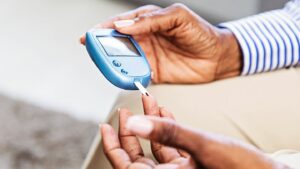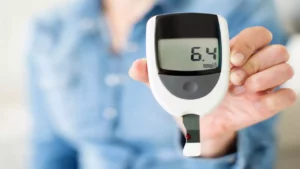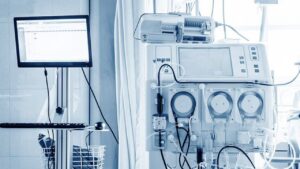Macroalbuminuria, also known as overt proteinuria, is a condition characterized by the presence of high levels of protein in the urine. It is often a sign of kidney damage or dysfunction. Understanding the causes, symptoms, and treatment options for macroalbuminuria is crucial for managing this condition effectively and preventing further kidney damage.
Contents
What is Macroalbuminuria?

Macroalbuminuria, also known as overt proteinuria, is a medical condition characterized by abnormally high levels of protein in the urine. Specifically, it refers to the excretion of more than 300 milligrams of albumin (a type of protein) daily in the urine. Normally, only trace amounts of protein are found in urine, but larger proteins like albumin can leak into the urine when the kidneys are not functioning properly.
Macroalbuminuria is often considered a sign of kidney damage or dysfunction, as the kidneys play a crucial role in filtering waste products and excess substances from the blood, including proteins. When the filtering units of the kidneys, called glomeruli, are damaged or inflamed, they may become more permeable, allowing proteins like albumin to pass through into the urine.
Causes of Macroalbuminuria:
- Diabetes: The most common cause of macroalbuminuria is diabetes, especially in individuals with poorly controlled blood sugar levels. Diabetic nephropathy, a type of kidney disease, can lead to macroalbuminuria over time.
- Hypertension: High blood pressure can damage the tiny blood vessels in the kidneys, leading to leakage of protein into the urine.
- Glomerulonephritis: Inflammation of the glomeruli, the filtering units of the kidneys, can cause macroalbuminuria.
- Other Kidney Diseases: Conditions such as polycystic kidney disease, lupus nephritis, and certain infections can also result in macroalbuminuria.
Symptoms of Macroalbuminuria:
- Foamy or frothy urine
- Swelling (edema), particularly in the hands, feet, or face
- Fatigue
- Loss of appetite
- Nausea and vomiting
- Shortness of breath
- Hypertension
Treatment Options for Macroalbuminuria
Treatment for macroalbuminuria aims to manage the underlying cause, reduce proteinuria (excessive protein in the urine), preserve kidney function, and prevent further kidney damage. Here are some common treatment options:
Blood Sugar Control

Blood sugar control plays a critical role in the treatment of macroalbuminuria, especially in individuals with diabetes mellitus, as it addresses one of the primary underlying causes of kidney damage and proteinuria. Here’s how blood sugar control is implemented as part of macroalbuminuria treatment:
Glycemic Management:
- Tight control of blood sugar levels is essential in preventing or delaying the progression of diabetic nephropathy, a common cause of macroalbuminuria.
- Healthcare providers typically recommend maintaining glycated hemoglobin (HbA1c) levels within target ranges. This long-term measure of blood sugar control reflects average blood glucose levels over the preceding 2-3 months.
- Target HbA1c levels may vary depending on individual factors such as age, duration of diabetes, presence of complications, and overall health status. However, a commonly recommended target for most adults with diabetes is less than 7%.
Continuous Glucose Monitoring (CGM) and Self-Monitoring of Blood Glucose (SMBG):
- Regular monitoring of blood sugar levels using CGM devices or SMBG meters allows individuals with diabetes to track their glucose levels throughout the day.
- This information helps them make informed decisions about medication dosing, dietary choices, and physical activity, enabling better glycemic control and reducing the risk of hyperglycemia (high blood sugar) or hypoglycemia (low blood sugar) episodes.
Diet and Lifestyle Changes
Diet and lifestyle changes play a crucial role in the treatment of macroalbuminuria, helping to manage underlying conditions, such as diabetes and hypertension, and reducing the risk of further kidney damage. Here’s how diet and lifestyle modifications can be implemented as part of macroalbuminuria treatment:
Dietary Changes
- Sodium Restriction: Limiting sodium intake helps reduce fluid retention and lower blood pressure, which can alleviate strain on the kidneys. Aim to consume less than 2,300 milligrams of sodium per day, and even less if you have hypertension or kidney disease. Avoid processed and packaged foods, which are often high in sodium, and opt for fresh, whole foods instead.
- Protein Moderation: Excessive protein intake can burden the kidneys and exacerbate proteinuria. However, protein restriction should be individualized based on factors such as kidney function, nutritional status, and overall health. Consult a healthcare provider or registered dietitian for personalized recommendations on protein intake.
- Balanced Diet: Emphasize a balanced diet rich in fruits, vegetables, whole grains, lean proteins (such as poultry, fish, tofu, and legumes), and healthy fats. This provides essential nutrients while supporting overall health and well-being.
- Fluid Management: Monitor fluid intake, especially if you experience fluid retention or swelling (edema). Limiting fluid intake may be necessary in some cases, particularly for individuals with advanced kidney disease or heart failure. Consult a healthcare provider for guidance on fluid restriction.
Weight Management

- Achieving and maintaining a healthy weight is important for managing macroalbuminuria, as obesity can contribute to insulin resistance, hypertension, and kidney damage.
- Focus on gradual, sustainable weight loss through a combination of calorie control, regular physical activity, and healthy eating habits.
- Consult a healthcare provider or registered dietitian for personalized guidance on weight loss strategies and nutrition.
Physical Activity
- Regular exercise is beneficial for overall health and can help manage macroalbuminuria by improving insulin sensitivity, blood pressure control, and cardiovascular fitness.
- Aim for at least 150 minutes of moderate-intensity aerobic activity (such as brisk walking, cycling, or swimming) per week, along with muscle-strengthening exercises on two or more days per week.
- Choose activities that you enjoy and can incorporate into your daily routine to promote long-term adherence to exercise.
Smoking Cessation
- Smoking is a significant risk factor for kidney damage, cardiovascular disease, and overall mortality. Quitting smoking is essential for managing macroalbuminuria and reducing the risk of complications.
- Seek support from healthcare providers, smoking cessation programs, or support groups to quit smoking successfully.
Alcohol Moderation
- Excessive alcohol consumption can raise blood pressure and contribute to kidney damage. Limit alcohol intake to moderate levels, which is up to one drink per day for women and up to two drinks per day for men.
- Choose lower-risk beverage options, such as wine, beer, or spirits, and avoid binge drinking.
Medications
Medications play a significant role in the treatment of macroalbuminuria, especially when it is associated with underlying conditions such as diabetes, hypertension, or glomerulonephritis. The choice of medications depends on the underlying cause of macroalbuminuria and may include:
Angiotensin-converting enzyme (ACE) Inhibitors
- ACE inhibitors, such as lisinopril, enalapril, and ramipril, are commonly prescribed medications for individuals with macroalbuminuria, particularly those with diabetes or hypertension-related kidney disease.
- These medications work by inhibiting the activity of angiotensin-converting enzyme, which plays a role in the regulation of blood pressure and fluid balance.
- ACE inhibitors help dilate blood vessels, reduce blood pressure, and decrease the production of angiotensin II, a hormone that constricts blood vessels and promotes sodium and water retention.
- By lowering blood pressure and reducing intraglomerular pressure, ACE inhibitors can help alleviate kidney damage and proteinuria.
Angiotensin II Receptor Blockers (ARBs)
- ARBs, such as losartan, valsartan, and irbesartan, are another class of medications commonly used to manage macroalbuminuria, particularly in individuals who cannot tolerate ACE inhibitors due to side effects such as cough.
- These medications block the effects of angiotensin II on blood vessels, leading to vasodilation and blood pressure reduction.
- ARBs are often used as an alternative or adjunct to ACE inhibitors for individuals with diabetes, hypertension, or other kidney diseases associated with macroalbuminuria.
Diuretics
- Diuretics, such as hydrochlorothiazide, furosemide, and spironolactone, are medications that increase urine production and promote fluid excretion from the body.
- These medications are commonly used to manage hypertension and reduce fluid retention in individuals with macroalbuminuria.
- Diuretics help lower blood pressure by reducing blood volume and decreasing the workload on the heart and kidneys.
Immunomodulatory Drugs
- In cases where macroalbuminuria is associated with autoimmune conditions such as lupus nephritis or other forms of glomerulonephritis, immunomodulatory drugs may be prescribed to suppress immune system activity and reduce inflammation.
- These medications may include corticosteroids (e.g., prednisone), immunosuppressants (e.g., cyclophosphamide, mycophenolate mofetil), or biologic agents (e.g., rituximab) targeted at specific immune pathways.
Regular Monitoring

Regular monitoring is a crucial component of macroalbuminuria treatment to assess kidney function, proteinuria levels, blood pressure, and overall health status. Monitoring helps healthcare providers evaluate the effectiveness of treatment, make adjustments as needed, and detect any complications early. Here’s why regular monitoring is important and what it typically involves:
Assessing Kidney Function:
- Kidney function tests, such as serum creatinine and estimated glomerular filtration rate (eGFR), are routinely performed to assess how well the kidneys are filtering waste products from the blood.
- Changes in kidney function over time can indicate the progression or regression of kidney disease, guiding treatment decisions and interventions.
Monitoring Proteinuria:
- Urine tests, such as urinalysis or urine protein-to-creatinine ratio (PCR), are used to quantify the amount of protein excreted in the urine.
- Monitoring proteinuria levels helps evaluate the severity of kidney damage and assess the response to treatment. Reduction in proteinuria indicates improved kidney function and reduced risk of complications.
Blood Pressure Monitoring:
- Regular blood pressure measurements are essential for individuals with macroalbuminuria, as hypertension is a common complication and contributor to kidney damage.
- Monitoring blood pressure levels helps assess the effectiveness of antihypertensive medications, lifestyle modifications, and overall blood pressure control.
Glycemic Control (for Diabetes):
- Individuals with macroalbuminuria due to diabetes require regular monitoring of blood sugar levels to assess glycemic control.
- Glycated hemoglobin (HbA1c) tests provide information about average blood glucose levels over the preceding 2-3 months, helping evaluate long-term glycemic control and guide diabetes management.
Renal Replacement Therapy

Renal replacement therapy (RRT) may be considered in individuals with macroalbuminuria who have advanced kidney disease and progressive decline in kidney function. RRT is indicated when the kidneys are no longer able to adequately filter waste products and excess fluids from the blood, leading to uremia (accumulation of toxins) and other complications. Here’s an overview of renal replacement therapy and its role in the treatment of macroalbuminuria:
Types of Renal Replacement Therapy:
a. Dialysis: Dialysis is a treatment that performs the functions of the kidneys artificially, removing waste products, excess fluids, and electrolytes from the blood.
There are two main types of dialysis:
- Hemodialysis: Blood is circulated outside the body through a dialysis machine, where it is filtered through a dialyzer (artificial kidney) before being returned to the body.
- Peritoneal Dialysis: A dialysis solution is instilled into the abdominal cavity through a catheter. It allows the waste products and excess fluids to be removed through the peritoneal membrane.
b. Kidney Transplantation: Kidney transplantation involves surgically implanting a healthy donor kidney into the recipient’s body to replace the failed kidneys. Transplantation offers the potential for better quality of life and long-term survival compared to dialysis, as it restores near-normal kidney function.
Indications for Renal Replacement Therapy in Macroalbuminuria:
- Renal replacement therapy is typically considered when kidney function declines to a point where conservative management measures are no longer effective in controlling symptoms and complications.
- Individuals with macroalbuminuria may require RRT if they develop end-stage renal disease (ESRD), characterized by severely reduced kidney function (eGFR <15 mL/min/1.73m²) and uremic symptoms such as fatigue, nausea, vomiting, pruritus, and fluid overload.
Conclusion
Macroalbuminuria is a serious condition that requires comprehensive management to prevent further kidney damage and complications. By addressing underlying causes, controlling blood sugar and blood pressure levels, adopting a healthy lifestyle, and closely monitoring kidney function, individuals with macroalbuminuria can improve their quality of life and reduce the risk of progression to end-stage renal disease.
Early detection and proactive treatment are key to managing this condition effectively. If you suspect you have symptoms of macroalbuminuria, it is important to consult with a healthcare professional for proper diagnosis and treatment.
Do you want to get rid of diabetes? Join our online diabetes treatment program and reverse Diabetes naturally through lifestyle changes such as a Personalized Diet plan, Exercise, Yoga, dieticians, and health coaches.

